8.0 Alternative Drip Irrigation System and Drip Micromound
A drip irrigation system is a type of micro irrigation system. The system is operated to operated to maximize the amount of unsaturated flow. This is accomplished by frequent, low-pressure applications of the treated wastewater within the biologically active zone. Under unsaturated flow conditions, there is improved renovation, detention, and aeration of the wastewater.

8.1 Siting Requirements
(a) The soils must be classified as either well drained or moderately well drained by a qualified soil scientist. The soil scientist will also determine the soil linear load , installation depth, tubing spacing, and minimum length of the drip field. The drip field area should avoid areas that are impacted by surface runoff, such as: swales, ditches, and gullies. A soil scientist is not required for large volume systems when the permit will be issued by the state.
(b) Percolation testing is not required, unless the soil scientist determines a test is necessary to confirm the soil classification. When percolation testing is conducted, the percolation rate must range between 3 and 90 minutes per inch in each drip zone. When percolation testing is conducted, a minimum of three percolation holes (see Chapter 73,Section 73.15) per zone are required. At a minimum, two drip zones are required.
(c) Slope in each drip irrigation zone must be between 0% and 25%.
(d) The depth to seasonal high water table or a soil condition that results in a slower permeability (i.e., fragipan horizon) from the surface of the ground must be at least 20 inches. If this condition is meet, the drip tubing needs to be installed at least 6 inches below the ground surface and a maximum installation depth of 12 inches.
(e) The depth to a high permeable material or fractured rock 26 to 32 inches depending on the installation depth. If this condition is meet, the drip tubing needs to be installed at least 6 inches below the ground surface and a maximum installation depth of 12 inches. This is because the minimum separation between the bottom of the drip tubing and the limiting zone is 20 inches.
8.2 Treatment Requirements
Prior to disposal, via drip irrigation, the wastewater must be pretreated using the following pretreatment system:
(a) Septic tank or aerobic treatments.
(b) Intermittent sand Filtration using buried or free access sand filters.
(c) Final filtration using a hydraulic unit fitted with in-line disk filters meeting or exceeding the filtration achieved by the "American Septic Drip" system disc filters. The system requires an automatic backwash system. All backwashing must be returned to the first septic tank or inlet of an aerobic treatment tank.
My professional recommendation typically includes the following: initial waste segregation to increase the removal of grease and oils, dual compartment septic tanks to increase solids reduction, aerobic treatment unit, Zabel effluent filter, free access sand filters, and appropriate hydraulic pumping/filtering system. The combination of septic and aerobic treatment provides for increased solids retention, decreases the effect of shock loads, provides a continuous source of carbon to aerobic unit, and provides a degree of safety if there is a problem with the aerobic unit. A Zabel filter or the equivalent is recommended to decrease the particle load to the free access sand filters.
Only approved drip manufacturer in Pennsylvania is American Manufacturing Company, 5517 Wellington Road, Gainesville, Virginia, 20155, 1-800-345-3132 please inform them that you reviewed the information online at this website.
More on Conventional Spray Irrigation, Drip Micromound, Low Volume Spray Irrigation, and Individual Residential Spray Irrigation Systems.
More Links on Drip Irrigation:
www.igin.com/Irrigation/dripirrigation.htm
www.jgpress.com/BCArticles/2001/050136.html
www.americanonsite.com/american/systems.html
Training Courses
EPA Onsite Wastewater Treatment: Processes and Systems
Onsite Wastewater Treatment - Flows & Quality
Onsite Wastewater Treatment - Nutrient Removal
EPA Onsite Wastewater Treatment: Systems Management
Advanced Wastewater Treatment Plant Design
We are in the process of setting up Face-to-Face Courses. We will be scheduling courses in soil science, soil morphology, hydric soils, and water sampling.
Current Featured Course
Field Training Course Scheduled for August 15, 2025 (Register Here)
Hands on Field Training Course Describing Soils

KnowYourH2O is a global educational and outreach web portal that empowers private well owners, city water users, and citizen scientists through fact-based tools, hands-on training, and accessible resources—covering both indoor and outdoor water quality concerns.
KnowYourH2O.com created by BF Environmental's founder Brian Oram, licensed professional geologist.
Whether you're a homeowner, business owner, or citizen scientist, the web portal is your guide on the Path to Clean Water. “Get Informed, Get Tested, Get Treatment” and take meaningful action toward clean water stewardship. Visit to Learn More.

